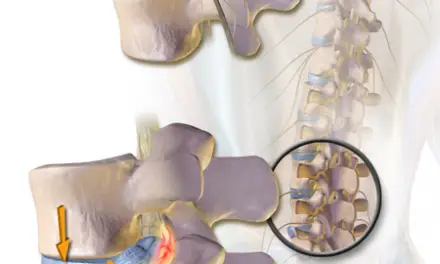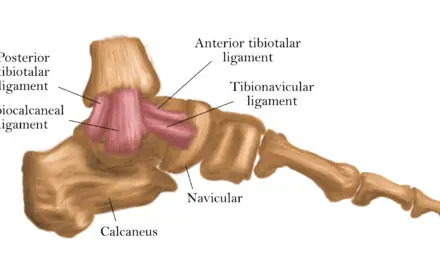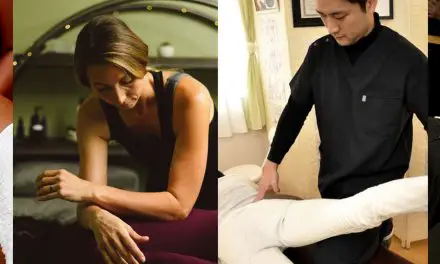A recent article published on Velo Magazine about massage therapy and recovery stirred a hornet’s nest among some massage therapists on social media. Some called the article “BS,” “crap,” and a host of other familiar terms we might see on some social media debates. A few said that the title is very misleading and does not reflect on the content. Before anyone else fume or criticize the story, let’s examine the evidence and see what it actually means.
Circulation & Blood Lactate
One popular belief about massage for exercise recovery is that it can help increase blood circulation to deliver oxygen faster and remove metabolic wastes. However, a majority of existing studies found that massage therapy does not do so.
First, blood lactate — sometimes referred to as “lactic acid” — is a byproduct of anaerobic metabolism as a result of insufficient oxygen delivered to muscles and other tissues. (4) Lactate is part of the Cori cycle, which is a process where glucose and lactate are constantly recycled during exercise to produce energy. (5) It is not a “toxin.”
A small 1996 study from the Netaji Subhas National Institute of Sports in Patiala, India, found that massage therapy is not significantly better than passive sitting and that active recovery is better than massage after exercise for lactate removal. (1) In 2010, another small study from Queen’s University in Ontario, Canada, found that massage impeded lactate removal after strenuous exercise by “mechanically impeding blood flow.” (3)
However, a study by Cambron et al. found that different types of massage may elicit different blood pressure responses, which may influence blood circulation. The authors found that Swedish massage decreases blood pressure among the subjects while trigger point therapy and sports massage increases blood pressure. But the increase may likely have been caused by pain the subjects experienced due to “potentially painful massage techniques.” (7)
Since most massage are quite relaxing, it makes sense that the clients’ and patients’ heart rate would decrease, which would decrease circulation. In fact, the therapist is more likely to have an increased circulation due to the work.
Muscle Soreness
Current evidence shows that there are little long-term or short-term benefits of massage on muscle soreness. Dr. Jason Brummit, DPT, from George Fox University in Newberg, Oregon, reviewed several studies that examined the effects of massage on muscle soreness. (2) Subjects who received massage after exercise in various studies did not feel any difference in soreness compared to those who did not receive a massage.
“Additional studies evaluating the effects of massage on athletes experiencing DOMS have also failed to demonstrate positive effects,” Brummitt wrote. “Active recovery techniques have been shown to be consistently superior to massage for lactate clearance. In addition, massage interventions have failed to effect post-exercise limb girth. Subjects who received massage generally experienced no improvement in pain or soreness perception as compared with controls. Hilbert et al. suggested massage can positively affect subjects’ perceived intensity of DOMS related soreness, but not until 48 hours post exercise.”
A more recent study published in the Journal of Strength and Conditioning Research found that elastic resistance exercise is just as good as massage to acutely provide muscle soreness relief. “Coaches, therapists, and athletes can use either active warm-up or massage to reduce DOMS acutely, for example, to prepare for competition or strenuous work, but should be aware that the effect is temporary, that is, the greatest effects occurs during the first 20 minutes after treatment and diminishes within an hour,” the authors concluded. (7)

Neutrophils
These are the most common type of white blood cell in mammals that are the front line combatants against infection, and there is a dearth of research that examines massage therapy’s effect on them. (8) An early study from East Carolina University in Greenville, North Carolina, found that neutrophil levels in the massage group is significantly higher than the control group. The small study also suggested that muscle soreness may be reduced if massage is applied after two hours post-exercise.
The Problem With These Research….
Most of the existing studies have very small sample population sizes that may or may not reflect on the majority of the population. Furthermore, some studies have inconsistent samples, such as using a broad age group, single gender, or specific population group like elite or recreational athletes.
Small sample population size is likely to fall in the small sample fallacy where extremes of outcome are more likely to appear than larger sample sizes. Philosophy professor Kevin DeLaplante explains this phenomenon in this video.
Another issue with the massage research is almost all of them have not been replicated. Part of the scientific method is for experiments to be repeatable and be able to be replicated by other researchers. This can help reduce different types of biases and errors as a safeguard against “bad science.”
Are There Any Benefits at All?
While there may not be much physiological benefits of massage therapy after exercise, there are some evidence that supports psychological benefits. Tiidus et al. found no physiological benefits among marathon runners in his (tiny) sample population, but seven out of 12 runners reported positive benefits after their massage. (10)
“These comments included statements such as, ‘More relaxed in massaged leg’, ‘Less stiff in massaged leg’, ‘Massage leg felt better while weight lifting’, ‘Feels different between legs when walking downstairs – massage feels better’, ‘Massage leg feels less pain’, ‘Massage leg feels looser when running’. These statements are indicative of the subjective impressions of improvements that massage can make,” the authors reported. (10)
“Why is it that the athlete feels refreshed or better after a massage? It may have something to do with biochemical markers for pain that have not been measured,” Dr. Brummitt told Massage & Fitness Magazine. He referred a recent study that indicated subjects who received neck and upper back adjustments had higher levels of oxytocin – a hormone that gives us a “euphoric feeling” – and neurotensin, which is a type of protein that act as a painkiller. (11)
“Could it be that this effect – the manipulation – be similar to that of the manual treatment via massage? It is possible,” Brummitt speculated.
Some psychological benefits from massage have been analyzed and measured. Dr. Christopher Moyer and his colleagues found that massage has a significant effect on reducing anxiety and depression in a 2004 meta-analysis. (12)
“Quantitative research reviews show that a series of [massage therapy (MT)] treatments consistently produces sizable reductions of depression in adult recipients. The effects of MT on anxiety are even better understood. Single sessions of MT significantly reduce state anxiety, the momentary emotional experiences of apprehension, tension, and worry in both adults and in children, and multiple sessions of MT, performed over a period of days or weeks, significantly reduce trait anxiety, the normally stable individual tendency to experience anxiety states, to an impressive degree in adults,” Moyer at al. stated. (13)
With the evidence we have currently, which can be much better, we can safely say that massage therapy could produce a positive psychological effect post-exercise for some people that makes them feel better without making claims that are not supported by strong evidence. And so, the article on Velo Magazine is mostly correct, although it should provide links to the original sources so that we can evaluate the evidence ourselves.
Given what we know so far, there is no need to denounce science or defend your beliefs as if the evidence is attacking you: it is not. In fact, research is just one part of your decision-making process for your clients or patients. It is part of a guide that helps you make the best choices at the time.
Science writer Paul Ingraham of PainScience.com described:
“When confronted with evidence that’s a bummer, at odds with your experience, remember that your experience is a fully legit third of that EBM equation. But! You must be very cautious not to lean too hard on your experience, because “you are the easiest person to fool” (Feynman). It’s only a third of the equation. Not two thirds. Not half. Just a third, roughly, give or take (probably always less than a third for younger professionals). And it’s never a very reliable third. Just like science, experience is difficult to interpret and often wrong.”
References
1. Gupta S, Goswami A, Sadhukhan AK, Mathur DN. Comparative study of lactate removal in short term massage of extremities, active recovery and a passive recovery period after supramaximal exercise sessions. International Journal of Sports Medicine. 1996 Feb;17(2):106-10.
2. Brummit, Jason. The Role of Massage in Sports Performance and Rehabilitation: Current Evidence and Future Direction. North American Journal of Sports Physical Therapy. 2008 Feb; 3(1): 7–21.
3. Wiltshire, EV et al. Massage impairs postexercise muscle blood flow and “lactic acid” removal. Medicine and Science in Sports and Exercise. 2010 Jun;42(6):1062-71. doi: 10.1249/MSS.0b013e3181c9214f.
4. The Free Dictionary. Blood Lactate. http://medical-dictionary.thefreedictionary.com/blood+lactate
5. The Cori Cycle. Interactive Concepts of Biochemistry. http://www.wiley.com/college/boyer/0470003790/animations/cori_cycle/cori_cycle.htm
6. Cambron JA, Dexheimer J, Coe P. Changes in blood pressure after various forms of therapeutic massage: a preliminary study. Journal of Alternative and Complementary Medicine. 2006 Jan-Feb;12(1):65-70.
7. Andersen, LL et al. Acute effects of massage or active exercise in relieving muscle soreness: randomized controlled trial. Journal of Strength and Conditioning Research. 2013 Dec;27(12):3352-9. doi: 10.1519/JSC.0b013e3182908610.
8. Neutrophils. Pubmed Health. http://www.ncbi.nlm.nih.gov/pubmedhealth/PMHT0022058/
9. Smith, LL et al. The effects of athletic massage on delayed onset muscle soreness, creatine kinase, and neutrophil count: a preliminary report. The Journal of Orthopaedic and Sports Physical Therapy. 1994 Feb;19(2):93-9.
10. Tiidus et al. Evaluating the Influence of Massage on Leg Strength, Swelling, and Pain Following a Half-Marathon. Journal of Sports Science & Medicine. 2004 Nov; 3(YISI 1): 37–43.
11. Hita-Contreras, F et al. Changes In Biochemical Markers Of Pain Perception And Stress Response After Spinal Manipulation. The Journal of Orthopaedic and Sports Physical Therapy. 2014 Apr;44(4):231-9. doi: 10.2519/jospt.2014.4996.
12. Moyer, CA. Affective Massage Therapy. International Journal of Therapeutic Massage & Bodywork. 2008; 1(2): 3–5.
13. Moyer, CA et al. A meta-analysis of massage therapy research. Psychological Bulletin. 2004 Jan;130(1):3-18.
14. Ingraham, P. EBM vs. clinical experience. PainScience.com.
15. Hilbert JE, Sforzo GA, Swensen T. The effects of massage on delayed onset muscle soreness. British Journal of Sports Medicine. 2003 Feb;37(1):72-5.
A native of San Diego for nearly 40 years, Nick Ng is an editor of Massage & Fitness Magazine, an online publication for manual therapists and the public who want to explore the science behind touch, pain, and exercise, and how to apply that in their hands-on practice or daily lives.
An alumni from San Diego State University with a B.A. in Graphic Communications, Nick also completed his massage therapy training at International Professional School of Bodywork in San Diego in 2014.
When he is not writing or reading, you would likely find him weightlifting at the gym, salsa dancing, or exploring new areas to walk and eat around Southern California.





